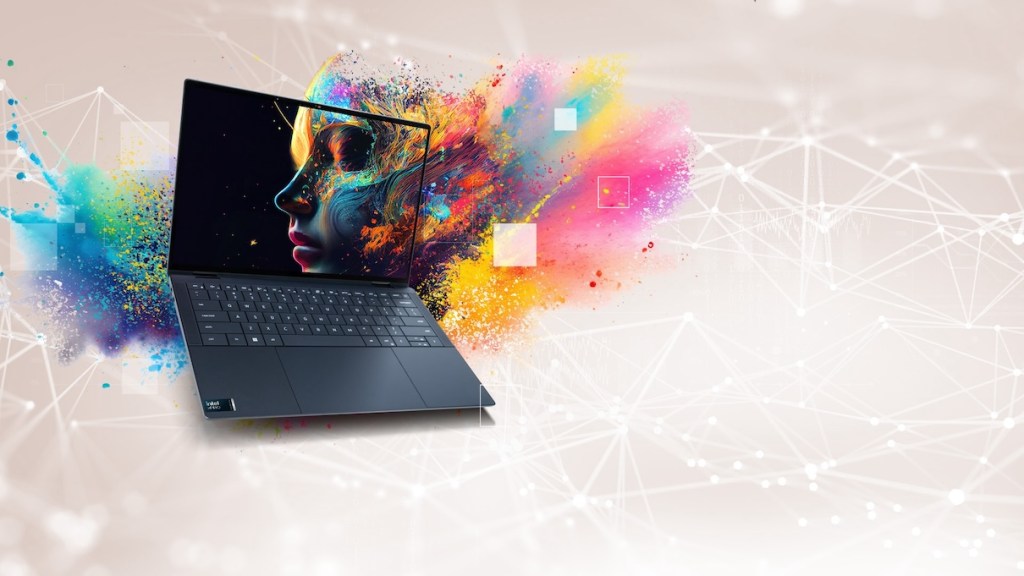Presented by Intel
In the dynamic landscape of technology, a subtle yet profound revolution is unfolding, extending the capabilities of generative AI (gen AI) from the vast data centers and ubiquitous cloud to the more immediate realms of edge computing and client devices. This shift comes from the desire to provide better customer experience by bringing compute closer to the data source and provide benefits to end-users in more personalized, efficient and contextually aware forms.
Central to this paradigm shift is silicon via AI PCs — with advanced AI capabilities integrated directly into edge devices and personal computers — and software that allows AI applications to be “written once, deployed anywhere.” Innovative hardware and software working together allow gen AI to become an intrinsic part of our digital fabric.
Personalization at the client level
The integration of gen AI into AI PCs, specifically laptops, marks a significant milestone in this technological evolution, bringing the power of AI directly to the fingertips of consumers. In this scenario, AI transcends being a mere service fetched from the cloud, becoming a core component of the PC’s capabilities, thereby offering a more personalized and intuitive computing experience.
We now see AI functionalities incorporated within chipsets, facilitating instantaneous data processing right on the device. This can eliminate the typical delays and privacy concerns associated with cloud reliance. Such an innovation paves the way for features like text, image and music generation, context-sensitive computing and dynamic performance optimization. As a result, AI PCs are evolving beyond simple tools to become proactive partners, seamlessly aligning with our individual preferences, and working styles.
Empowering creativity and productivity
The democratization of AI on PCs is not just about efficiency or convenience; it’s a catalyst for creativity and innovation. For creators, designers and professionals, the ability to harness AI’s power directly on their devices means they can iterate more quickly, experiment more freely and bring their visions to life with unprecedented precision and insight.
Hardware, optimized for AI workloads, provides the backbone for this creative explosion, ensuring that professionals across industries can leverage AI without compromise. Intel is working with over 100 ISVs to optimize their AI software, enabling over 300 AI applications and features. Whether it’s AI-assisted design software that predicts user needs, or real-time video editing suites that adapt to the creator’s style, the potential for innovation is boundless.
Innovate at the data source
Edge computing is crucial for applications requiring real-time processing and decision-making without the latency that cloud dependencies incur. It is also critical for controlling bandwidth costs and the security and privacy of certain data sets. Reflecting the growing importance of these factors, it is projected that by 2026, AI will be involved in 50% of all edge computing deployments.1
Imagine smart cities where traffic management systems instantaneously respond to changing conditions. Generative AI models running on edge devices analyze data to predict traffic congestion, accidents and other potential disruptions. By simulating various traffic scenarios and generating optimal traffic light sequences and routes, these AI models can dynamically adjust traffic signals and provide routing recommendations to minimize congestion and improve traffic flow. This is not a distant future but an emerging reality, enabled by AI capabilities embedded at the edge.
Companies are focusing on creating a robust ecosystem that empowers developers and businesses to deploy AI where it’s most needed, leveraging the onboard capabilities and efficiencies of the AI PC. New technology, equipped with AI acceleration capabilities, is being designed to handle complex AI workloads efficiently, reducing the need for constant reliance on cloud connectivity.
Challenges and considerations
This shift towards edge and PC-based AI is not without its challenges. Privacy and security concerns are paramount, as devices become more autonomous and capable of processing sensitive data. Companies must focus on privacy and AI ethics to be the cornerstone of their approach, ensuring that as AI becomes more integrated into our devices, it does so in a manner that respects user privacy and trust.
Moreover, the energy efficiency of AI workloads is a critical consideration, especially for battery-powered devices. Advancements in low-power, high-performance processors are pivotal in addressing this challenge, ensuring that the benefits of gen AI are not offset by decreased device longevity or increased environmental impact. Intel’s OpenVINO toolkit further enhances these benefits by optimizing deep learning models for fast, efficient performance across Intel’s hardware portfolio. This optimization enables customers to deploy AI applications more widely, even in resource-constrained environments, without sacrificing performance.
The road ahead
As we enter this new era, the way we think about gen AI and how we engage with it will continue to change. As companies build a commitment to innovation, privacy and sustainability, we are all setting the stage for a future where AI is not just a cloud-based service but an integral, ubiquitous part of our digital experience.
The revolution at the edge and on PCs is a testament to the transformative potential of gen AI, promising a future that is more personalized, efficient and creative. As this technology continues to evolve, its integration into every facet of our digital lives will become more pronounced, blurring the lines between the digital and the physical, and between technology and intuition.
The future of AI and compute will not just power devices; it will empower individuals, businesses and societies to achieve more — pushing the boundaries of what’s possible with technology and redefining our relationship with the digital world. The future of gen AI is not just beyond the cloud; it’s right here, at the edge and in our hands, reshaping our world in ways we are just beginning to imagine.
La Tiffaney Santucci is AI Marketing Director for Edge and Client at Intel.
1. Gartner®, Building an Edge Computing Strategy, Thomas Bittman, 12 April 2023. Gartner is a registered trademark.
Sponsored articles are content produced by a company that is either paying for the post or has a business relationship with VentureBeat, and they’re always clearly marked. For more information, contact sales@venturebeat.com.




